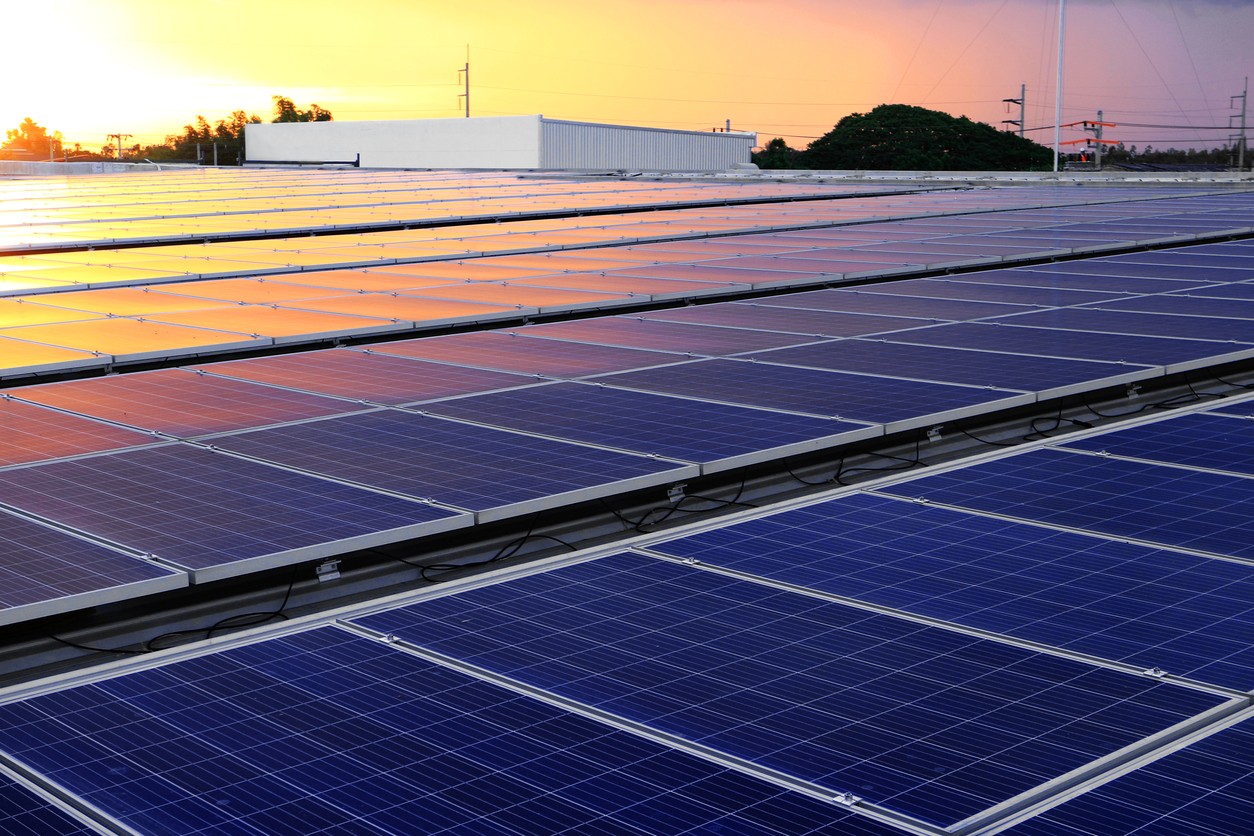
The Inflation Reduction Act (IRA) is a historic piece of legislation that will provide lower energy costs for businesses in the US. It guarantees energy security and promotes decarbonization initiatives. In simple terms, the legislation allots $369 billion to combat climate change and decarbonize the economy.
2022 saw the largest investment in energy and climate in American history. It has given the populace a chance to address the climate crisis. It also represents a significant step forward for environmental justice, solidifies America’s position as a global leader in domestic renewable energy manufacturing, and puts the country on track to meet the climate goals set forth by the Biden Administration, including a net-zero economy by 2050.
Without a doubt, solar panels are a profitable business investment that can help improve workplaces for both employees and the bottom line. The Inflation Reduction Act of 2022 has made solar an even wiser choice for business owners looking to reduce operational costs and boost profitability.
The Inflation Reduction Act (IRA) and its initiatives to solve the climate problem have made an impact. A crucial part of the law is to encourage the use of clean energy instead of fossil fuels. A sizable chunk of its funding comes from renewable energy tax credits, including tax credits for commercial solar installation.
Learn more about solar panels, the Inflation Reduction Act, and how your company can benefit from new incentives to save money on solar installation below.
What Is the Inflation Reduction Act of 2022?

In August 2022, the Inflation Reduction Act of 2022 was approved. In response to climate change, this Act pushes new federal expenditures in the direction of the industry. The bill aims to minimize healthcare costs, increase tax compliance, fund the Internal Revenue Service, and cut carbon emissions.
IRA 2022 encourages purchases of essential products domestically or from free-trade partners while catalyzing investments in domestic manufacturing capacity. In addition, it focuses on accelerating R&D and the commercialization of cutting-edge technology. These include clean hydrogen and carbon capture and storage.
Additionally, it gives money to environmental justice initiatives directly. The receivers of funding streams are severely required by the Inflation Reduction Act of 2022 to show equity implications. In the opinion of the Congressional Budget Office, the law will cut budget deficits by $237 billion over the following ten years.
Since late 2021, a third law has been passed to enhance US economic competitiveness, innovation, and industrial productivity. The CHIPS & Science Act, the IRA, and the Bipartisan Infrastructure Law (BIL), which have several priorities in common, will add $2 trillion in new federal expenditure over the next ten years.
Investment Tax Credit
The Investment Tax Credit can now be sold or transferred to other taxpayers and has increased from 26% to 30%. The 30% discount is valid for commercial projects that started in 2022 and will endure through the end of 2032.
Everyone ought to become familiar with using transferrable credits. Transferable credits are more complicated than receiving funds from the government directly, but they are still simpler than tax equity schemes. Until recently, energy storage projects could only receive tax credits if they were directly related to solar power plants.
As a result of the Inflation Reduction Act, energy storage projects are now eligible for the same 30% tax credit regardless of whether they are standalone facilities. Even if the batteries are no longer being charged by solar power, they will still be eligible for the credit provided they are connected to a solar power installation. The tax credit for projects under five MWac will also cover interconnection fees.
The Investment Tax Credit will be phased out beginning in 2025 and replaced by a much broader, technology-neutral credit that covers several emission-reducing technologies in addition to solar power. Similar conditions apply to solar, which is also eligible for a thirty percent transferable tax credit that lasts through September 2031. The credit will start to decline after 2032.
What Are Some Additional Considerations?

For larger projects, there are additional considerations:
Apprenticeship and Prevailing Wage
A project’s employment requirements must be considered if it is greater than 1 MWac in size. The tax credit is 6% by default. The mechanics and laborers who install solar power projects must receive prevailing wages and be enrolled in an electrical apprenticeship program to qualify for the additional 24%. In 2023, projects will be eligible to use these tax credits.
The Department of Labor or the relevant State apprenticeship agency may also specify standards for the ratio of apprentices to journey workers. A minimum of one certified apprentice must be employed by contractors or subcontractors who employ more than four people to do repair work, construction, or alteration.
If violations occur, the Secretary of Labor will be fined $5,000 for each mechanic or laborer who receives an inadequate wage. If it is shown that the underpayment was done on purpose, the penalty doubles to $10,000 per mechanic or laborer.
Domestic Content
By acquiring domestically produced hardware, solar power projects eligible for the full 30% tax credit can raise their tax credit by an extra 10%, or 40%. According to the document, all steel and iron must be produced in the US. Although this ratio will rise in the future, manufactured goods like solar panels, inverters, and electrical equipment must initially be 40% US-made.
In the past, products had to have at least 55% domestic content to be labeled as “Made in the USA”. Some exceptions to these rules are listed in the bill. Products not produced in sufficient quantities or of suitable quality may be imported. Additionally, materials that would increase the project’s cost by more than 25% may be purchased abroad. All project sizes must adhere to these specifications, with certain exceptions.
Project Siting
An additional 10% tax credit is available for projects in former “energy communities.” Brownfields are the first category of energy communities, followed by places connected to fossil fuels throughout the previous generation.
The census tract and any connecting census tracts are eligible if there have been significant extraction jobs related to coal, oil, or natural gas since 31 December 1999. The region and the tracts nearby are also eligible if a coal mine or power plant closed during the same period.
Clean Electricity Production Credit
The wind industry received a tax credit for a long time calculated per kilowatt-hour. The solar industry was also qualified for this production credit before 2007. However, the solar energy sector is now entirely covered by the Production Tax Credit. It is referred to as the “Clean Electricity Production Credit”.
A solar power plant will earn a tax credit of 2.5 cents/kWh if it complies with the prevailing wage criteria for the first ten years of the project’s life. If a project doesn’t fulfill prevailing wage requirements, it will only be paid 0.3 cents per kWh before inflation is considered. The production credit rises when it is prorated for inflation going the future.
Opportunity for Sixty Percent Credit
Several solar power plants offer electricity through solar community projects to those with modest incomes. A 10% adder is given to these projects. As a result, the overall tax credit may be as high as 60%. If you are unsure how, try adding the ten percent for being situated in an area that once produced fossil fuels, the ten percent for selling power to low-income families through community solar, the ten percent for domestic content, and the thirty percent tax credit base.
What Does the Inflation Reduction Act of 2022 Mean for Commercial Solar Installation?

If you use solar energy to power your business operations or looking forward to going solar, you may wonder how the IRA affects you. Here are some essential considerations for you to remember:
30% Federal Solar Tax Credit
One of the best incentives for companies using commercial solar is the Solar Investment Tax Credit (ITC). Businesses have benefited from it for years. The Inflation Reduction Act of 2022 strengthens the case for going solar, which was already compelling enough for small and large-scale firms to do so.
It’s fair to say that businesses are now quite interested in IRA 2022. The Act increases the federal solar tax credit to its initial 30%. Due to this increase, businesses can now deduct 30% of the total cost of their commercial solar installation from their federal tax obligations.
The price rise will go into effect in 2022. As a result, you are now eligible for the new thirty percent credit if you were previously expecting to claim the previous twenty-six percent Investment Tax Credit on your 2022 taxes.
You may be able to go solar today because of the new 30% solar tax credit by lowering the upfront expenses of commercial solar installation.
In Effect for a Decade
The new 30% solar energy tax credit is here to stay for a while, which is wonderful news. The 30% tax credit is prolonged for ten years under the Inflation Reduction Act of 2022.
Not to add, it retroactively includes all of the commercial solar projects scheduled for 2022. All sizes of commercial and utility-scale solar installations are eligible for the federal solar tax credit.
In other words, whether you’re considering constructing a commercial solar system for your solar system or investing in solar panels for your rental properties, you can still take advantage of the new 30% solar tax credit. It provides the same benefit as rooftop solar on a substantial industrial structure.
Solar Battery Storage
Although you might not have known this, solar battery storage is covered under the new federal solar tax credit, which has a 30% value. Additionally, for the first time, solar batteries are eligible for the solar tax credit.
Solar batteries can considerably impact your commercial solar system’s effectiveness and power generation. It can assist you in maintaining necessary operations throughout a power outage, avoiding downtime and squandering resources.
With the recently enhanced federal solar tax credit, there has never been a better time to install commercial solar panels. There are various ways solar can benefit your business in 2022 and beyond.
Start Your Commercial Solar System Installation Project with Coldwell Solar
Commercial solar systems can minimize energy costs and lessen the carbon footprint of enterprises. You can manage the tax advantages of going solar with Coldwell Solar’s assistance to ensure you don’t lose out on any incentives. Contact us today to get started on your commercial solar project!

